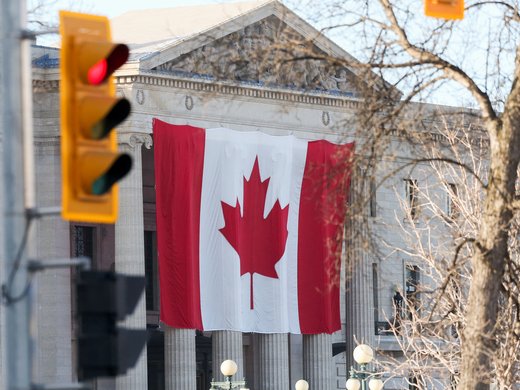On April 10, 2014, Reserve Bank of India Governor Raghuram Rajan gave a speech at the Brookings Institution in Washington called “Competitive Monetary Easing: Is it yesterday once more?” His message — central banks were conducting experiments in monetary policy with little regard for the impact on other countries — didn’t go over well with his brethren. Policy makers who spend considerable time at meetings of the G20, the Bank of International Settlements and the Financial Stability Board disliked being accused of insularity. Ben Bernanke, recently retired as chairman of the U.S. Federal Reserve, rose from the audience and dismissed Rajan’s critique as simply that of someone who is, “very skeptical about unconventional monetary policy.”
Rajan was undeterred by Bernanke’s putdown. He told me later that week in an interview that Bernanke’s idea of consultation was little more than “information sharing.” Two years later, Rajan still is making the case for a systemic approach to avoiding negative spillovers from monetary policy. He has written a few op-eds and given more speeches. And on March 29, he did what every committed intellectual does when he or she has a point to make: He published a paper. Rajan, with Prachi Mishra, an adviser in the RBI’s research department, has coalesced his thinking on negative spillovers in a 29-page Reserve Bank of India working paper called “Rules of the Monetary Game.” The work isn’t the final word on the subject. But it represents some of the clearest thinking on how the current “non-system” of international finance could be turned into something a little more orderly to emerge in several years. It will be harder this time to shrug off his critique.
The core of Rajan’s complaint is that the “systemically important” central banks think too much about their own jurisdictions and not enough about fostering global utility. “The bottom line is that simply because a policy is called monetary, unconventional or otherwise, it may not be beneficial on net for the world,” Mishra and Rajan write. “That all monetary policies have external spillovers does not mean that they are all justified. What matters is the relative magnitude of demand creating versus demand switching effects, and the magnitude of other net financial sector spillovers, that is, the net spillovers.”
Most central bankers believe they already achieve global utility — to the extent they can — through floating exchange rates. Bank of Canada Governor Stephen Poloz is fond of saying a stronger U.S. dollar in 2015 was a means of sharing American demand with the rest of the world. Canada appears finally to have benefited. The country’s gross domestic product increased 0.6 percent in January from the previous month, the fourth consecutive monthly gain, as manufacturers and others posted stronger sales south of the border. Spending by international tourists in Canada surged 5.9 per cent in 2015, the biggest increase in five years. That mostly was the result of Americans taking advantage of a favourable exchange rate. Consultancy KPMG reckons Canada is one of the planet's most competitive places to invest, in large part because the local currency’s weakness against the U.S. dollar offsets expensive real estate and other input costs.
But how much of what Canada achieved at the turn of the year is additional aggregate demand, and how much of it simply is demand that would have been generated in the United States if not for an uncompetitive exchange rate? Mishra and Rajan show that no one really knows; the analysis of international spillovers is too immature to offer an answer. This is excellent argumentation. By showing there is no empirical foundation on which to judge whether spillovers are an issue, Mishra and Rajan show Bernanke’s side of the argument is no more solid than theirs. The biggest advocates of QE, low-for-long interest rates and negative rates acknowledge these policies are risky. They tend to induce volatility and they definitely encourage borrowing. Canada’s growth spurt comes in the shadow of a mountain of household debt that will — at a minimum — restrain future spending as households seek to reduce their credit lines. If extraordinary monetary policy generates only marginal global economic growth, while causing significant financial hazards, maybe central banks should agree to stand down?
Let’s say that becomes the consensus. How would they do it? This usually is where talk of overhauling the global financial system stops. There is no appetite for a new Bretton Woods system of fixed exchange rates. Nor are Rajan and Mishra advocates for one. But they do think the major central banks can do more than compare notes. “If countries agree on a set of new rules or principles, which describe the limits of acceptable behavior, it can reduce the inefficiencies and lead to higher welfare in all the countries,” they write. “This does not mean countries have to coordinate policies, only that they have to become better global citizens – provided we can find clear and mutually acceptable rules.”
Since they are advocating new “rules of the road,” Rajan and Mishra suggest designating policies as green, orange and red. “Green” measures would have a broad stamp of approval from the global community. “Orange” policies would be riskier, and it would be understood that they should be deployed only temporarily. The “Red” tool box would stay shut. “For example, if unconventional monetary policy actions lead to a feeble recovery in some of the advanced countries leading to small positive effects on exports to emerging economies (EMs), but large capital flows to, and asset price bubbles in, the EMs, these policies could be rated red,” they write. “Global welfare would decrease with this policy.”
Rajan’s paper is undermined by digs like that one. But while he has a serious issue with extraordinary monetary policy, he favours creating a system that could ultimately endorse the status quo. Rajan and Mishra propose the appointment of a group of “eminent” academics from a diverse group of countries that would assess spillovers and grade the policies. Its conclusions would be taken up by the IMF, the G20 or some other international group. This would force policymakers to explain their choices in a broader context. The final stage as Rajan and Mishra see it would be an international conference at which the world’s leading countries would decide how to integrate spillovers with the domestic mandates of their central banks. Rajan doesn’t shy from saying that the end result could be a new agreement along the lines of Bretton Woods. But he’s not insisting. “There can be no more important issue to understand and discuss than the international spillovers of domestic policies,” Rajan and Mishra write. “Such a discussion need not take place in an environment of finger pointing and defensiveness, but as an attempt to understand what can be reasonable, and not overly intrusive, rules of conduct.”


